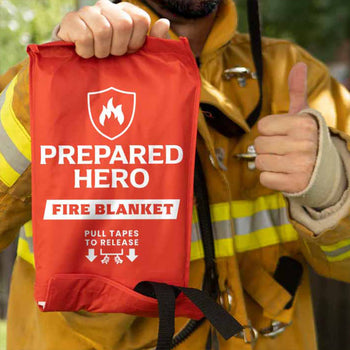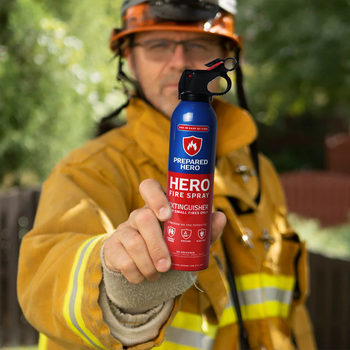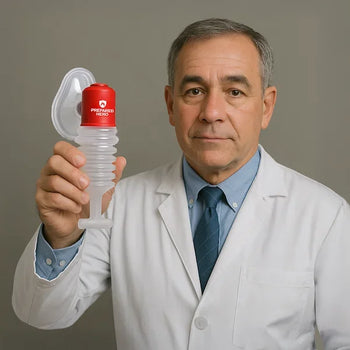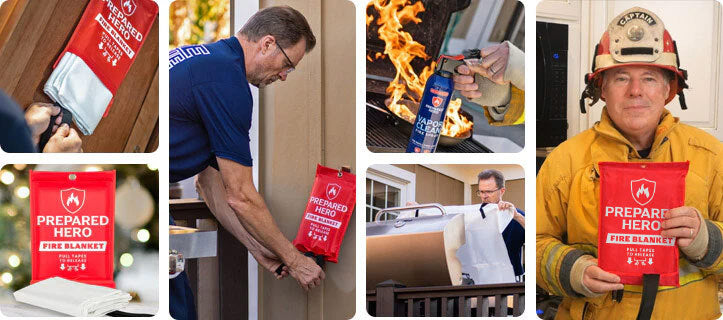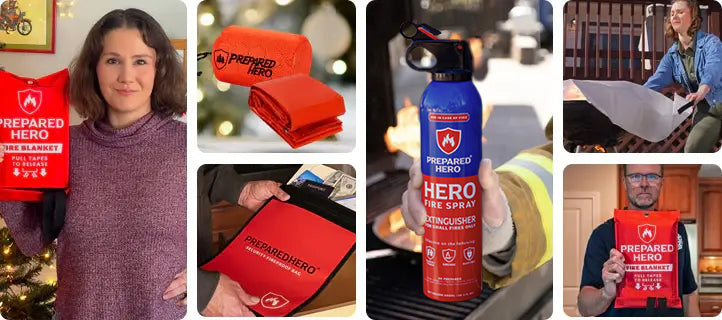Where you put your smoke detectors matters just as much as installing them. Proper placement makes sure they can detect...
Keeping a workplace or commercial space safe isn’t just about having fire alarms and sprinklers. It’s also about having the right commercial fire extinguishers. Not all fires are the same, which means not all extinguishers work the same way.
What you need depends on the risks in your business, whether that’s a busy kitchen, a tech office, or a warehouse. If you don’t know where to start, we’re here to help. This guide covers everything you need to know about commercial fire extinguishers.
Types of Commercial Fire Extinguishers Based on Content

Having the right fire extinguisher matters because not every fire is the same. Different types are built for specific risks, so knowing which one fits your workplace keeps everyone safer. Here are the different types of commercial fire extinguishers based on what they’re made of:
1. Powder Fire Extinguishers
There are two common types of powder extinguishers: ABC and Class D. ABC fire extinguishers are often called the “all-rounders.” They work on Class A, B, and C fires, which are caused by common solid combustibles, flammable liquids or gases, and electrical equipment.
On the other hand, Class D fire extinguishers contain dry powder that’s usually a blend of powdered graphite, sodium chloride granules, and copper fragments.
When sprayed on a Class D fire, the dry powder creates a barrier between the metal and the oxygen in the air. This helps absorb some of the heat, decreases the fire’s intensity, and eventually puts out the Class D fire.
Take note that Class D dry powder fire extinguishers cannot be used on other types of fire. They’re specifically made for Class D fires and should not be mistaken for powder fire extinguishers that you can use on Class A, B, and C fires.
It usually contains monoammonium phosphate, a dry chemical that smothers the flames and cuts off oxygen. These extinguishers are especially useful in commercial or industrial spaces where you might face more than one type of fire risk. They’re also easier to maintain than other types, which is another reason many businesses rely on them.
2. Wet Chemical Fire Extinguishers
Commercial kitchens need their own fire defense, and that’s where wet chemical fire extinguishers come in. They’re used for grease fires in the kitchen, which water or powder can’t put out.
As the term suggests, they contain a liquid chemical that cools the flames and creates a protective layer over the fuel. If you run a restaurant, café, or food service operation, having these extinguishers is non-negotiable.
3. Carbon Dioxide Fire Extinguishers
Carbon dioxide (CO2) fire extinguishers are a smart choice for places with lots of electronics, like server rooms. They’re made for Class B and C fires, which means they can handle flammable liquids or gases and electrical equipment.
They work by removing oxygen around the flames, which suffocates the fire. Since they don’t leave behind messy residue, they’re often found in server rooms, labs, or offices with sensitive equipment. The only caution: CO2 can displace oxygen and be risky for people nearby in small spaces. So, you should know how to use them safely.
4. Water Fire Extinguishers
Water extinguishers are used against fires caused by materials like paper, textiles, or wood. The water cools the flames quickly and stops them from spreading.
Just remember that water extinguishers should never be used on electrical or flammable liquid fires, since they can make things worse.
5. Water Mist Extinguishers
Like water fire extinguishers, water mist doesn’t contain any chemicals. They also don’t leave residue, which makes them perfect for electrical fires. In particular, water mist extinguishers use fine deionized water particles that cool the fire without conducting electricity.
In addition, they can be used against Class A and B fires. Some water mist extinguishers can also put out fires caused by electrical equipment with up to 1,000 volts (e.g., printers and computers).
A water mist fire extinguisher cools the fire and decreases the oxygen supply. By doing these, they eventually extinguish the fire. In particular, a water mist fire extinguisher expels water through its special nozzle. The nozzle then releases microscopic water particles that form a mist curtain.
The water particles then cool down the air. It also fills it enough to reduce the oxygen feeding the fire. As a result, the water particles suffocate the fire. Since the droplets are so tiny, they leave nearly no trace, making water mist extinguishers safe for electronics, books, fabric, and the like.
6. Foam Extinguishers
Foam fire extinguishers work against Class A fires (like paper, wood, or fabric) and Class B fires (flammable liquids and gases). One big advantage is that they don’t just put out flames. They also stop the fire from starting up again.
If they’ve been dielectrically tested, some foam extinguishers can even be used on electrical fires, though that’s not their primary purpose.
You shouldn’t use them on metal and grease fires because they won’t be effective and could make things worse. Foam extinguishers are common in places like offices, schools, hospitals, and warehouses where the risk of flammable liquid fires is higher.
They work by spraying a foaming agent that both cools the fuel and forms a barrier over it. This cuts off the oxygen supply, smothers the flames, and keeps the fire from reigniting.
Types of Commercial Fire Extinguishers Based on the Fire They Put Out

There are different types of commercial fire extinguishers based on the type of fire they put out. Knowing the difference helps you pick the right one for your business. Here are the different types of fire extinguishers based on what they put out:
1. Class A Extinguisher
As the term suggests, a Class A fire extinguisher puts out Class A fires. These fires are caused by common combustibles like wood, paper, fabric, plastics, and rubber. These are everyday materials that can easily catch and spread fire. The extinguisher works by removing heat, cutting off oxygen, and stopping the chemical reaction that keeps the fire burning.
Class A fires can start from simple accidents, like a candle tipping over onto a wooden table, a stack of papers too close to a space heater, or a rag left near a hot stove. Dry leaves, grass, and branches can catch fire outside from something as small as a dropped match or cigarette.
While Class A fires might seem less threatening than chemical or electrical fires, they can spread fast. Once flames consume one combustible item, they can quickly move to others nearby and turn a small flame into a major fire. Furniture, clutter, and stored boxes can all make the fire grow faster.
Class A fires produce heat, flames, and smoke, so they’re dangerous to both people and property. Knowing what fuels them is the first step in preventing them. Keeping flammable materials away from heat sources helps you stay safe.
Class A fire extinguishers have a specific symbol: a green triangle with the letter A inside it. This triangle indicates that it can put out fires caused by ordinary combustible materials like paper, wood, cloth, rubber, and most plastics. If you see the green triangle label, you know it’s the right extinguisher for a Class A fire.
In most cases, Class A fire extinguishers come with ratings. The numerical ratings indicate the amount of water it holds and the amount of fire it can put out.
2. Class B Extinguisher
A Class B fire extinguisher puts out fires fueled by flammable liquids and gases, such as gasoline, alcohol, propane, butane, kerosene, and certain cleaning products. These fires are dangerous because water can spread or cause them to react violently.
A Class B fire is fueled by flammable liquids or gases. Due to this, it’s more dangerous and harder to put out than many other fire types. They can start from something as simple as a spill near a heat source, a gas leak ignited by a spark, or vapors building up in an enclosed, poorly ventilated area.
Once ignited, Class B fires spread quickly, burn intensely, and can produce toxic fumes. They can happen almost anywhere: garages, workshops, kitchens, labs, factories, or gas stations. In homes, spilling liquor onto a lit stove burner or using spray paint near a running power tool could trigger one. In industrial settings, gas leaks near hot equipment can cause explosions.
Water should never be used to put out a Class B fire because it can spread the flames or react violently. Instead, you need the right tool, like a Class B fire extinguisher, fire blanket, or fire spray, to smother the flames and prevent reignition.
A Class B extinguisher has a red square label with a large letter B inside it. Some are multi-purpose and also display letters like A or C for other fire types. Meanwhile, the numerical rating on the label shows the size of fire it can handle. Whether stored in a garage, workshop, or kitchen, having a Class B fire extinguisher ensures you can respond quickly and effectively to dangerous liquid and gas fires.
3. Class C Extinguisher
A Class C fire extinguisher is made to safely put out electrical fires. These fires, also known as Class C fires, are caused by faulty wiring, overloaded outlets, overheating appliances, or malfunctioning electronics. Its main goal is to stop the fire without putting you at risk of electric shock or damaging your equipment.
A Class C fire starts from energized electrical equipment, which is still connected to a live power source. As long as the power is on, the fire can keep burning and spread to other areas. These fires are dangerous because they can start quietly, spread fast, and sometimes lead to explosions. They’re not just a home problem; Class C fires can happen in offices, factories, data centers, and outdoors.
Common causes include faulty wiring, overloaded outlets, malfunctioning appliances, heating devices, and overheating electronics. For example, a damaged extension cord, an overheated space heater, or a malfunctioning toaster can all trigger a Class C fire. Since wiring often runs behind walls and ceilings, the flames might grow unnoticed until they’re harder to control.
Water should never be used on a Class C fire because it conducts electricity and can cause electric shock. Instead, the safest way to handle them is by turning off the power source and using tools like a Class C fire extinguisher, fire spray, or fire blanket. Acting quickly and safely is key because these fires can escalate in minutes, putting people, property, and lives at serious risk.
A Class C fire extinguisher has a blue circle with the letter C inside. This mark means the extinguisher is designed for electrical fires, such as those caused by faulty wiring, overloaded outlets, overheating appliances, or other electrical issues.
Unlike Class A and B extinguishers, Class C extinguishers don’t have numerical ratings. Instead, they’re tested for non-conductivity, which means they won’t let electricity travel through the extinguishing agent while in use. This is crucial for safety because using the wrong extinguisher type on an electrical fire could cause electric shock, damage the equipment, or make the fire worse.
4. Class D Extinguisher
A Class D fire extinguisher is made for fires involving combustible metals like lithium, magnesium, sodium, aluminum, and titanium. These metals burn at extremely high temperatures and can react dangerously with water, which is why ABC or water extinguishers aren’t safe to use.
Class D fires usually start when metal dust, shavings, or molten metal come into contact with heat, sparks, or flames. They’re most common in industrial environments such as factories, foundries, welding shops, recycling facilities, and some laboratories.
The main function of Class D extinguishers is to safely and effectively put out metal fires that would otherwise be uncontrollable with standard firefighting methods. However, Class D extinguishers are only for this purpose. They shouldn’t be used on other fire types. If you work around combustible metals, keeping one nearby is essential for quick action when a fire starts.
You can spot a Class D fire extinguisher by looking for its unique symbol: a yellow star with the letter D inside. This fire extinguisher symbol indicates it’s built to handle fires caused by combustible metals like lithium, magnesium, sodium, aluminum, and titanium.
If you don’t see the yellow star and letter D, it’s not meant for metal fires. Plus, using water can be dangerous, as some metals react violently with it.
Always check the label before grabbing an extinguisher in an emergency. Manufacturers clearly list the fire classes an extinguisher can handle, so you can confirm you have the right one for the job.
The National Fire Protection Association (NFPA) also rates these extinguishers based on how much extinguishing agent they carry and how it’s applied. So, if you work around combustible metals, make sure your extinguisher has the yellow star symbol.
5. Class K Extinguisher
A Class K fire extinguisher puts out grease fires that usually start in the kitchen. It’s commonly caused by vegetable oils and animal fats. It uses a wet chemical agent, which is often made of potassium acetate, potassium carbonate, potassium citrate, or a mix of these.
Since the spray is gentle, it doesn’t splash hot oil around. It also works on grease fires involving kitchen appliances, even if they’re electric. Its main function is to safely and quickly put out cooking-related fires that water or other extinguishers can’t handle. Plus, using water on a grease fire can cause dangerous explosions, making a Class K extinguisher essential for home and commercial kitchens like those in restaurants and food trucks.
A Class K fire occurs when cooking oil, fat, or grease gets too hot and ignites. These fires are common in home and commercial kitchens, especially when deep frying or cooking at high temperatures. They’re dangerous because the flames can flare up fast, spread quickly, and burn at extremely high temperatures.
Common causes include unattended cooking, grease buildup, frying frozen food, and having flammable items too close to your stove. Even small splashes or spills can start a fire if the oil is hot enough. Plus, you can’t use water to put them out because it will make the burning oil splatter or explode. Find out more about putting out a grease fire here.
A Class K fire extinguisher has a black hexagon with the letter K inside. This symbol means it’s built to handle fires caused by cooking oil, fat, and grease. Don’t mistake it for a multi-purpose extinguisher. Those usually have the letters A, B, and C in different shapes, which are not meant for Class K fires.
Unlike other types, Class K extinguishers don’t have ratings. According to the NFPA, there’s only one test for grease fire extinguishers, which is pass or fail. So, when in doubt, always check the label before using one.
Fire Extinguisher Alternatives
While fire extinguishers help a lot, they can be expensive, heavy, and hard to store. They might also contain toxic chemicals and leave a mess that’s hard to clean up.

A fire spray is an easy-to-use, lightweight, and affordable alternative to fire extinguishers. Prepared Hero’s fire spray is also biodegradable and non-toxic. Unlike a fire extinguisher, you can safely use it around your family and pets.
Here’s a table summarizing the differences between Prepared Hero’s fire spray and a regular fire extinguisher:
| Prepared Hero’s Fire Spray | Regular Class A Fire Extinguisher |
| Lightweight, easy to carry | Heavy, hard to carry |
| Easy to store | Needs more space for storage |
| 100% biodegradable | Mostly made of non-biodegradable materials |
| Non-toxic | Toxic |
| Easy to clean | Hard to clean |
| Safe for kids and pets | Not safe for kids and pets |
Another alternative is a fire blanket, which depletes the fire’s oxygen supply. By doing this, it puts out small fires in seconds. It also doesn’t leave a mess because it simply covers the fire.

Unlike fire extinguishers, Prepared Hero’s fire blanket doesn’t expire. You can reuse it as many times as you want as long as it’s not damaged. Here’s a table summarizing the differences between Prepared Hero’s fire blanket and a regular fire extinguisher:
| Prepared Hero’s Fire Blanket | Regular Class A Fire Extinguisher |
| Lightweight, easy to carry | Heavy, hard to carry |
| Affordable | Expensive |
| Doesn’t expire | Expires |
| Easy to store | Needs more space for storage |
| Non-toxic | Toxic |
| Doesn’t leave a mess | Leaves a mess |
| Safe for kids and pets | Not safe for kids and pets |
| Can be used on humans | Can’t be sprayed on humans |
Do you want reliable, easy-to-use, and affordable tools to put out fires? Check out Prepared Hero’s fire prevention tools here, and get up to 51% off on certain items.
Picking the Right Fire Extinguisher for Your Business
The right commercial fire extinguisher depends on the type of work you do and the risks around you. For example, restaurants and commercial kitchens need Class K extinguishers because they’re designed to handle cooking oil and grease fires.
On the other hand, offices and server rooms do better with CO2 extinguishers since they put out electrical fires without leaving messy residue. Warehouses often rely on ABC powder extinguishers because they can handle several types of fires, from paper and wood to flammable liquids and gases. If your business works with metals like magnesium or titanium, you’ll need Class D units since regular extinguishers won’t work on those fires.
Water extinguishers are useful in many workplaces for simple Class A fires involving wood, paper, or textiles. The most important part is knowing your risks and placing extinguishers where they’re easy to reach. You should also make sure your staff knows how to use them properly.
What Is the Difference Between a Commercial and Residential Fire Extinguisher?

The main difference between a commercial and residential fire extinguisher comes down to size, strength, and purpose. Commercial extinguishers are built for bigger risks, like those in warehouses, hotels, or factories. They’re bigger, heavier, and made with durable materials to handle tougher conditions. Because of this, they can put out more serious fires and are often required by law in workplaces to meet safety codes.
On the other hand, residential extinguishers are made for everyday household use. They’re smaller, lighter, and easier for most people to grab and handle quickly (usually weighing five to 10 pounds). They work on common home fires caused by things like paper, wood, cooking mishaps, or electrical issues.
Another difference is durability. Residential models usually have plastic handles and are not meant for constant heavy use, while commercial ones often use metal parts and are built to last longer. In short, commercial extinguishers are built for scale and compliance, while residential ones are all about quick, easy protection at home.
How Many Fire Extinguishers Do You Need?
The number of extinguishers in your building depends on the size of the property, the layout, and the types of fire risks. Larger and more complex buildings will naturally need more coverage, especially if there are multiple fire hazards.
The NFPA recommends considering building type and the risks inside. For example, a restaurant kitchen will need wet chemical extinguishers near cooking equipment, while a warehouse that stores chemicals may need more dry powder extinguishers.
Local regulations also matter. For instance, fire codes may require additional coverage beyond NFPA standards in many states. This is where working with a fire protection professional helps. They can inspect your site, assess your risks, and recommend the correct number and type of extinguishers.
It’s not just about how many you have, it’s also about where they’re placed. A well-thought-out plan ensures extinguishers are available when and where you need them most.
Meeting Commercial Fire Safety Requirements

Fire safety in business settings isn’t only about having extinguishers on the wall. There are broader requirements you need to meet for compliance and, more importantly, for protecting people and property.
Here’s what business owners should focus on:
- Determine Fire Hazards: Look at your workplace carefully. Fire hazards usually include faulty wiring, flammable liquids, and electrical equipment.
- Have The Right Extinguishers: Match extinguishers to risks. Water extinguishers handle Class A fires like paper and wood, while carbon dioxide extinguishers are used for electrical equipment. Extinguishers should also be easy to see, clearly labeled, and not blocked by furniture or stock.
- Follow OSHA Standards: The Occupational Safety and Health Administration sets rules on fire extinguisher placement, type, and upkeep. Meeting these keeps your workplace legally compliant.
- Use Sprinklers When Needed: High-risk areas often require automatic sprinkler systems for faster response.
- Schedule Inspections: Regular checks by certified professionals ensure your extinguishers are functional and up to code.
- Train Your Staff: Even the best extinguisher won’t help if nobody knows how to use it. Training is a must.
Meeting these requirements is about more than avoiding fines. It’s about creating a safer environment where your employees feel confident and protected.
Do Fire Extinguishers Expire?
Yes, fire extinguishers expire. Their lifespan depends on the type, whether they’re rechargeable or disposable, and how well they’re maintained.
According to the International Fire and Safety Journal, a well-maintained fire extinguisher lasts 10 to 12 years. However, certain models may become outdated because regulations change or technology improves. In general, disposable fire extinguishers last for up to 12 years, while rechargeable ones have to be recharged every six years.
You can check if yours is expired by looking at the manufacturing date, inspecting the pressure gauge, and checking for damage like rust, cracks, or a broken tamper seal.
Expired extinguishers won’t work due to low pressure, clogged nozzles, or degraded chemicals. If yours is past its prime, replace it or consider alternatives like fire blankets. They don’t expire and are easy to store.
How to Use a Fire Extinguisher

Knowing how to use a fire extinguisher could mean life or death in an emergency. The PASS method keeps things simple so you can act fast. Here’s how to use an extinguisher properly:
1. Pull
First, remove the safety pin from the extinguisher. This unlocks the handle so you can release the agent. If your extinguisher has a tamper seal, break it before pulling the pin.
2. Aim
Point the nozzle or hose at the base of the fire, not the flames. Targeting the fuel source puts out the fire quickly.
3. Squeeze
Press the handle or lever slowly and evenly. Doing this controls the flow of the extinguishing agent so you can aim accurately without wasting it.
4. Sweep
Move the nozzle from side to side across the fire’s base. Keep going until the flames are out. Stay alert for flare-ups and repeat if needed.
What Do the Letters On Fire Extinguishers Indicate?
The letters on fire extinguishers indicate the types of fires the extinguishers are designed to handle.
For one, the letter A indicates that the fire extinguisher can put out fires involving common materials like wood, paper, and fabric. These are typical household or office fires that you can often put out with water-based extinguishers. On the other hand, the letter B is for fires involving flammable liquids and gases like gasoline and propane. These fires require extinguishers that use foam, CO2, or powder because water can make them worse.
Meanwhile, the letter C indicates that the extinguisher is for electrical fires. These fires are caused by electrical equipment, like faulty wiring or malfunctioning appliances. Class C extinguishers don’t conduct electricity, making them safe to use on live electrical fires. Class D is for combustible metal fires. These are unique and require specialized extinguishers that use dry powder to handle the high-intensity heat. Lastly, Class K is for grease fires.
Can You Recharge Fire Extinguishers?

Yes, you can recharge fire extinguishers as long as they’re rechargeable. In many cases, it’s the smarter choice compared to buying a new one. Recharging means refilling the extinguishing agent and restoring the correct pressure, so the extinguisher is ready for the next emergency. This isn’t something you can do on your own, so it should always be handled by trained professionals.
There are a few clear signs that your extinguisher needs a recharge. First, if you’ve used it, even just a little, it must be recharged before it can be relied on again. Second, check the pressure gauge; if it’s low, it won’t work properly, so a recharge is needed. Regular maintenance is also important.
Even if you haven’t touched the extinguisher, it should still be inspected and recharged on schedule to make sure it meets safety requirements. If you notice leaks, rust, or repeated pressure loss, it may be better to replace it completely instead of recharging.
Local fire equipment service companies are usually the go-to option for recharging your extinguisher. Some fire departments also offer this service, and certain safety equipment suppliers can provide assistance as well.
What Do the Numbers on Fire Extinguishers Indicate?
The numbers on fire extinguishers indicate their effectiveness in fighting specific types of fires.
For one, the numbers on Class A fire extinguishers show how much fire they can handle based on the equivalent amount of water they can put out. The higher the number, the larger the fire it can fight. Meanwhile, the numbers on Class B fire extinguishers indicate how much area the extinguisher can cover when fighting fires involving flammable liquids or gases. Again, a higher number means it can cover a larger area.
On the other hand, Class C fire extinguishers don’t have numbers because their main concern is electrical safety. These extinguishers are rated based on their ability to prevent electrical shock when used on energized equipment rather than the size of the fire. Similarly, Class D fire extinguishers don’t come with numbers. Instead, they’re rated based on the amount of extinguishing agent needed and how to use it to control the fire.
The same goes for Class K fire extinguishers. According to the NFPA, grease fire extinguishers are only tested on a single-size fire source. Hence, there’s only one outcome, which is pass or fail.
Conclusion
Workplace fire safety is all about having the right tools. Choosing the right extinguishers, placing them correctly, and maintaining them can make all the difference when an emergency happens.
By staying on top of inspections and relying on professionals when needed, you’ll keep your workplace safer and ready for the unexpected. Stay prepared, hero!


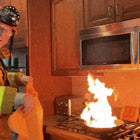 Fire
Fire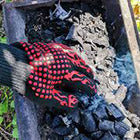 Safety
Safety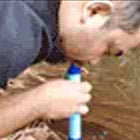 Survival
Survival Protection
Protection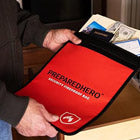 New
New
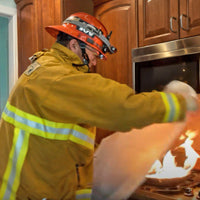 Fire
Fire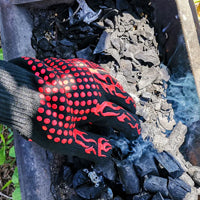 Safety
Safety Survival
Survival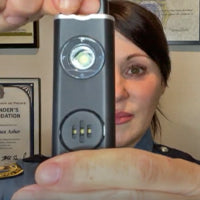 Protection
Protection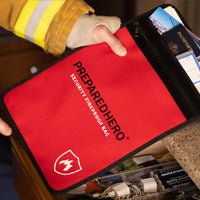 New
New
